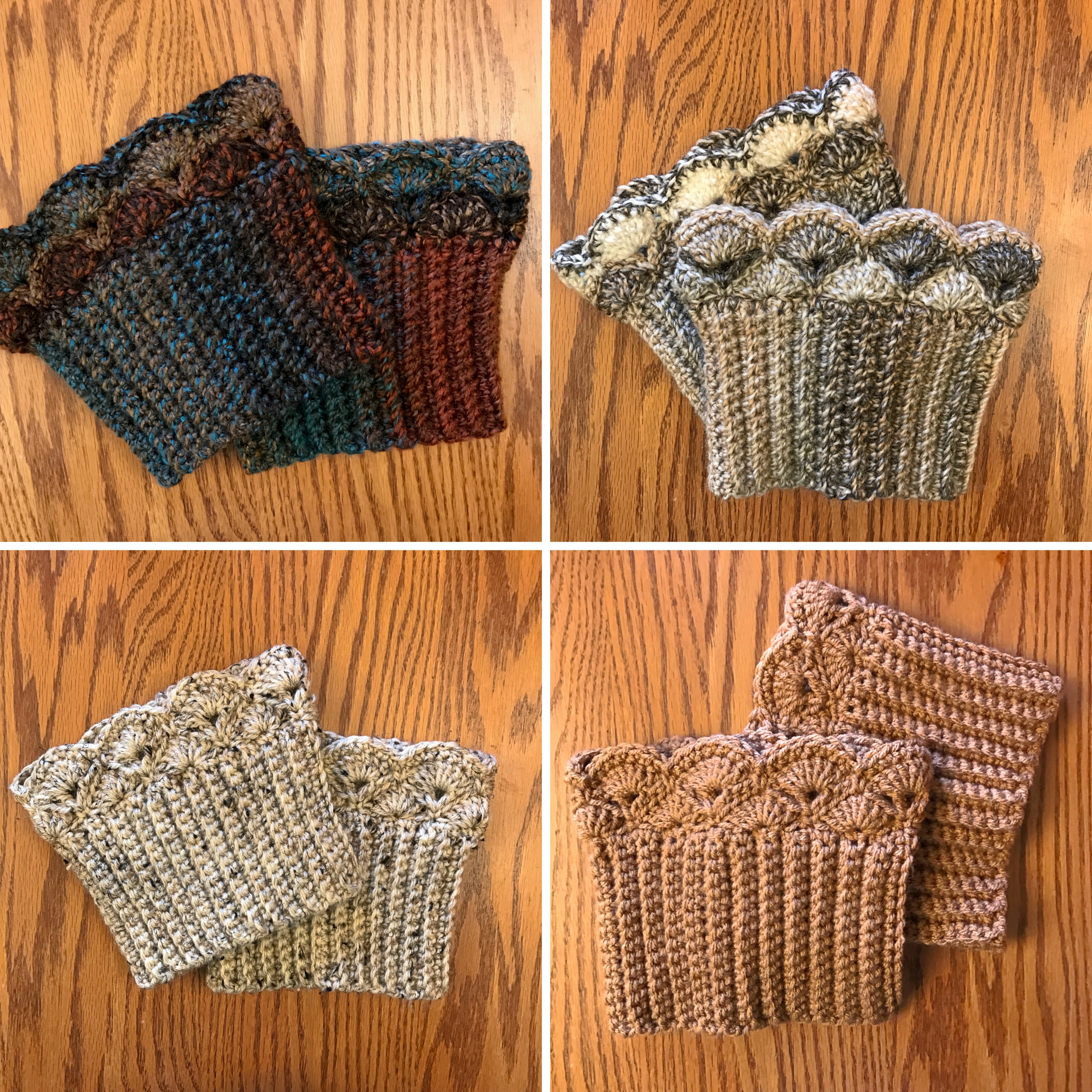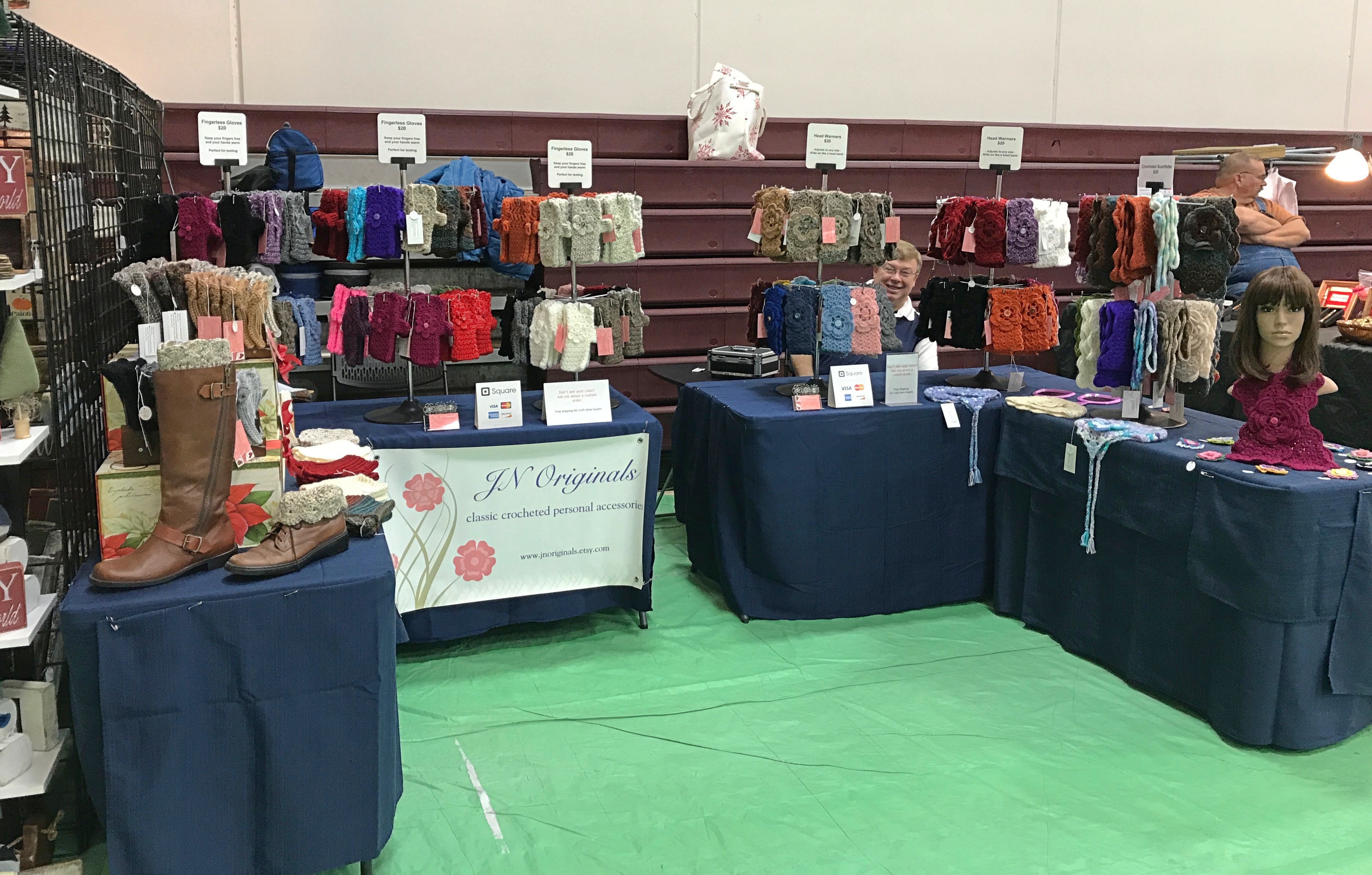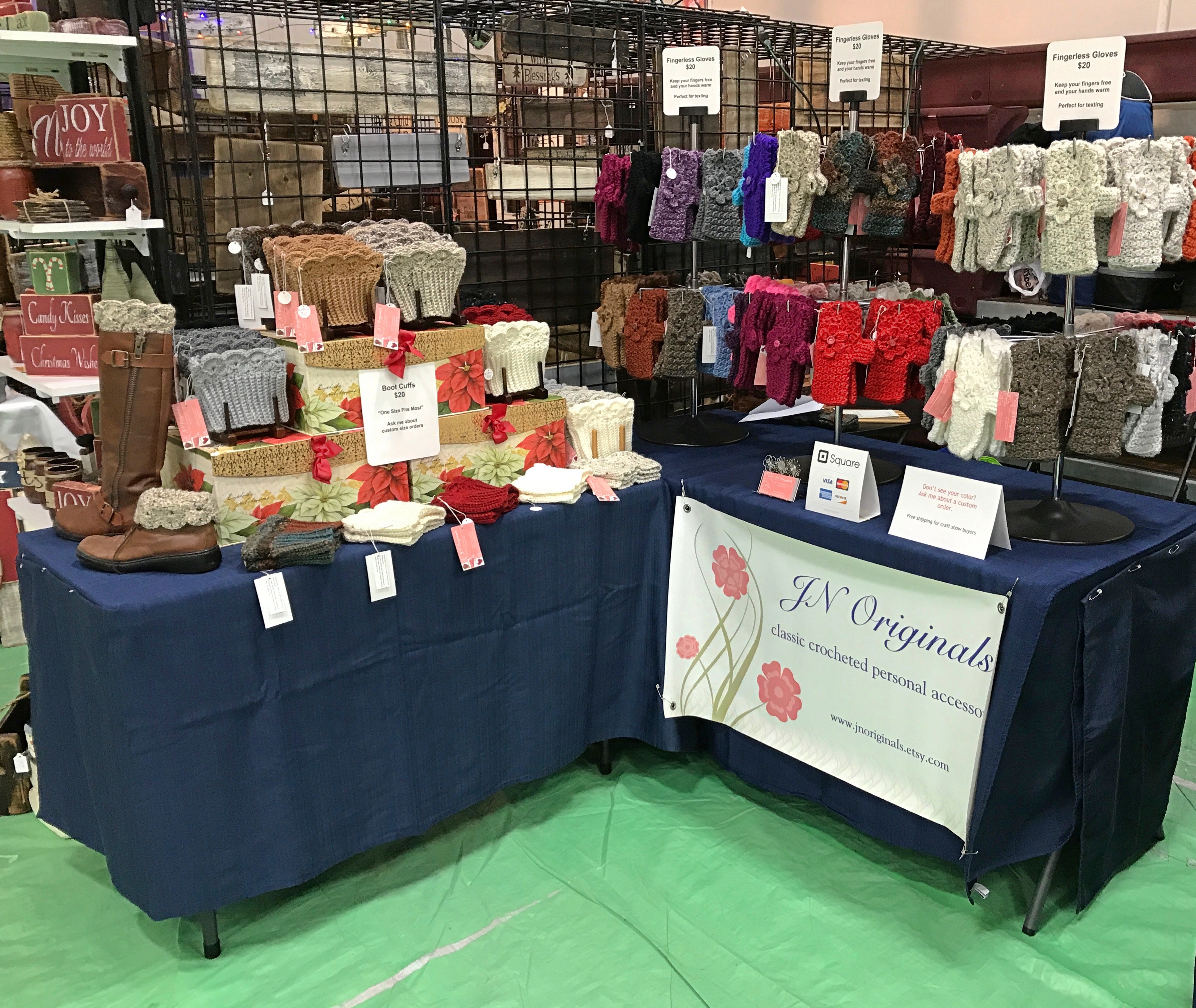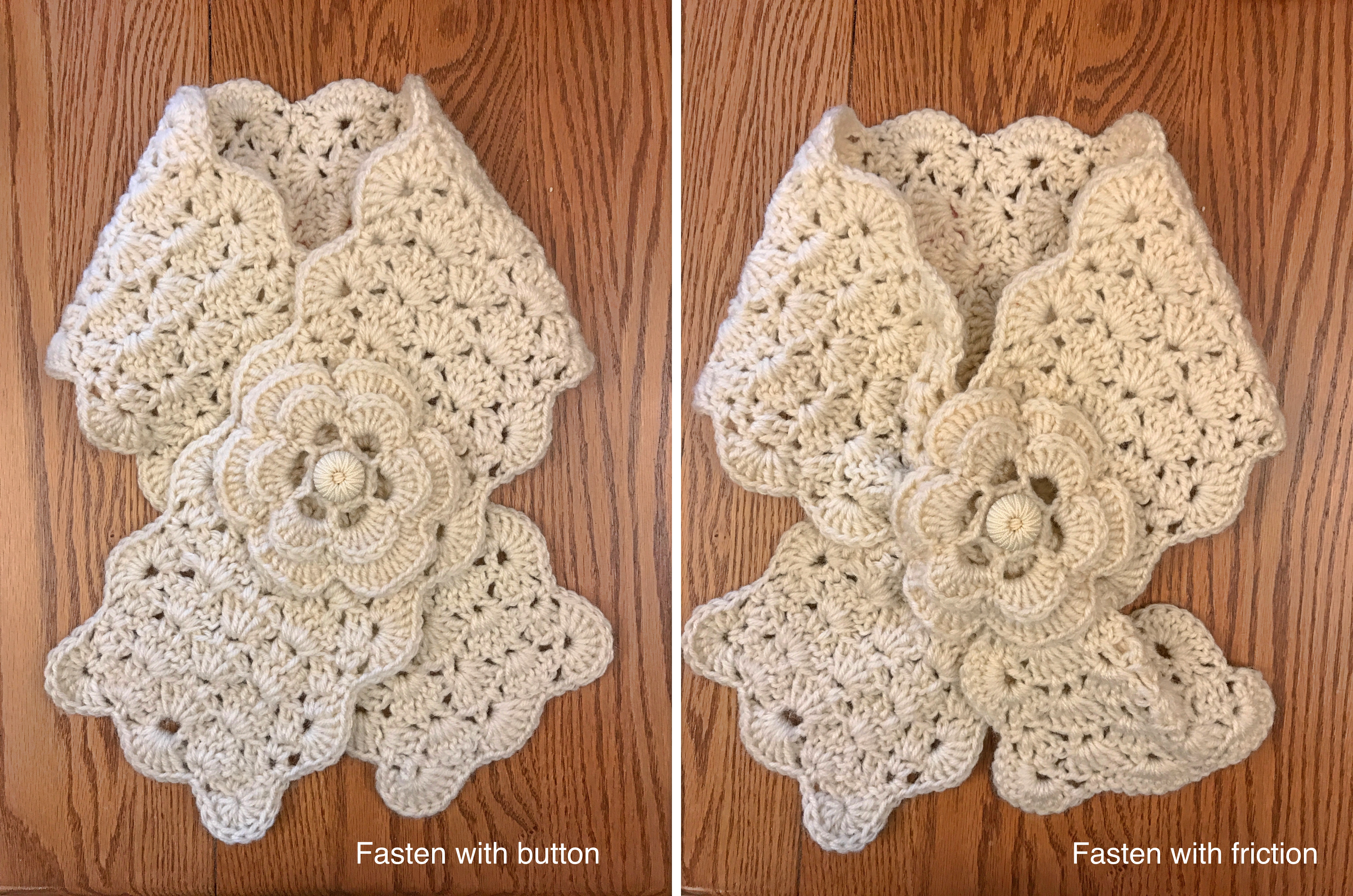This past Saturday was the culmination of months’ worth of evenings and weekends when I crocheted an endless stream of women’s winter accessories: head warmers, scarflettes, fingerless gloves and boot cuffs. I sell these items at only two craft fairs a year, which is likely my capacity because I also work full-time in an office. It can be challenging to create as much product as needed, or to start a new line. This year saw the introduction of boot cuffs.

Saturday’s craft show—the first time at this particular venue—went well. My husband and I rose early to set up our booth space at Santa’s North Pole Village in Ankeny, Iowa. When the doors opened at 9:00 a.m., we were ready to sell, the shoppers were lined up outside the doors, and we were off to the proverbial races.
You never know how a venue will turn out, so you have to be prepared for anything. Two weeks earlier, my husband and I traveled to Clarinda, Iowa to sell the same crocheted goods at Clarinda Craft Carnival. This has been an excellent selling venue for us in past years, but this year the weather was unseasonably warm—weather that does not exactly put winter apparel in the minds of shoppers. Our results, while not awful, were also not spectacular. The lesson learned—and you always learn lessons everywhere you sell—is that it probably would not be a bad idea to make part of my merchandise less weather-dependent. I have already started a list of possibilities, not least among them crocheted lace earrings.

This past weekend’s venue had a number of positive factors going for it, cooperative colder weather among them. The booth space was larger than other venues where I have sold, enabling me to set up my tables in a shallow U-shape. At the two ends of that U-shape, I set up props—one tall boot and one short boot at one end, each accessorized with a boot cuff. For the boot cuffs in particular, having real boots on hand as “models” served a useful purpose; at Clarinda’s craft fair, some people had no idea what boot cuffs are. In fact, many were more familiar with the term “boot toppers”than boot cuffs, and a few people couldn’t understand why you’d wear them at all. I guess that just meant they weren’t my typical customers; you can’t take these things personally!

On the other end of the U-shape, I stood up a table mannequin who wore a head warmer and scarflette. This gave me the opportunity to show how you wear both accessories.

In the case of the scarflette, I could point to the button on the back side of the flower embellishment that allows the two ends of the scarflette to cross and fasten into place. Inevitably, this led to an explanation that there is a second way to fasten the scarflette: you can scrunch up one of the tails and slide it beneath the petal openings of the flower, using friction to keep the tails of the scarflette crossed.

At the end of this weekend’s craft show, John and I packed everything up, counted the earnings, and talked about what we had learned at both craft shows this year.
- A prop—not just a picture—is worth a thousand words. One woman’s boot cuff is another woman’s boot topper, and sometimes no one knows what either term means.
- Pay attention to traffic flow. Foot traffic was heavy at the Ankeny craft show, moving counterclockwise around the gym in which we were located. The shallow U-shape provided a welcome space for people to stop for a breather, invited conversation, and subsequently drew them to the merchandise.
- Pay attention to customers’ comments. A color that I wear a lot—jade—was nowhere in sight among my products. Next year I will remedy that omission!
- Don’t set up your booth display the same way at all craft shows. Even if you have sold at the venue previously, you create customer excitement with variety. Brick-and-mortar retail stores do the same thing, rearranging the location of merchandise frequently to draw attention. Think about booth arrangement before you arrive, and get clarification from the show’s organizers if you have no idea what to expect. Often a map of the venue is available online or via email.
- Weather can be a factor in people’s shopping habits. Take this into consideration when you evaluate your show’s results. If I had never sold my products previously in Clarinda, I might have come to the conclusion that this is not a good venue for me. Instead, I need to think about how I can minimize the effect of weather on what I can sell.
- When you evaluate the worthiness of a craft venue, don’t look at only your sales. There are many factors that define success. Consider not only your expenses (booth fees, travel, meals, hotel accommodations), but also how much you have learned about your customers, future product possibilities, and possibly also other selling opportunities.
Do you typically take the time after a craft show to do more than count your earnings and take inventory of your stock? It’s critical to hold an honest conversation with yourself and possibly a partner to evaluate what went well, what didn’t work, and what you can do differently in the future. In the process, you’ll create better possibilities for your next selling event.
© 2017 Judy Nolan. All rights reserved.

I’m glad your show last weekend went great!
My last show in St. Joe, MO was not as great as I had hoped. But as you said, you always learn something and it’s not always about the dollars. I have already had 2 follow-up orders, so at least people who took cards are using them
I love the u shaped booth! What a great suggestion to plan your setup differently for different shows. I worked at an independently owned gift shop in college and Sunday mornings were for rearranging. It can really people notice something new, but I’ve nev thought to apply it to craft shows! I may start doing them again next year on the Mainland…we will see